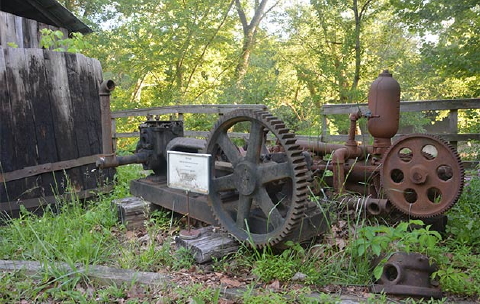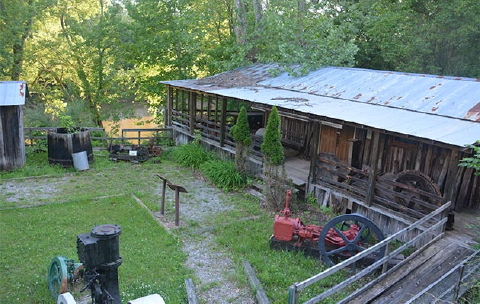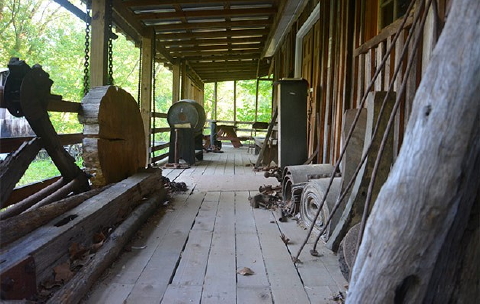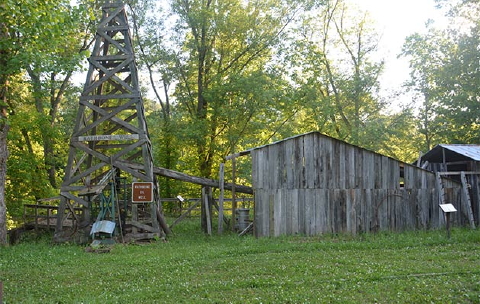STATE JOURNAL: Burning Springs Honors WV's Historic Oil-Gas Industry

2016
Burning Springs Honors WV's Historic Oil and Gas Industry
By Sarah Tincher for www.statejournal.com
Although the Burning Springs Oil Field no longer hosts a producing oil well, the site still stands today as a historical monument representing the humble beginnings of West Virginia's now-flourishing oil and gas industry.
Burning Springs Park, which is tucked away in the hollows of Wirt County, allows visitors the opportunity to peek into the past. The 22-acre site features historic photos and records, as well as antique pumping equipment and a variety of other artifacts surrounding the 155-year-old Rathbone oil well.
But locals and tourists alike might not realize the historical significance of the secluded site, which is situated alongside the Little Kanawha Parkway just outside of Elizabeth.



William Palmer Rathbone began purchasing property in the surrounding area in 1840 before arriving in Burning Springs with his sons. The family began drilling for salt brine, but found the brine was contaminated by oil. Then in 1859, the Rathbones began drilling for oil along the Little Kanawha River, striking oil in July 1860. The family quickly began producing 100 barrels of oil a day on the Burning Springs site, which historians have said was one of only two oil fields in America prior to the Civil War.
But things quickly turned around when William "Grumble" Jones, a United States Army officer and Confederate cavalry general during the Civil War, raided the Baltimore and Ohio Railroad and commanded Confederate forces to set fire to the oil stored in the tanks, barrels and boats surrounding the Burning Springs Complex, destroying hundreds of thousands of barrels of oil May 9, 1863.
Production resumed a year later at the outset of an oil boom in the region, though Mike Thomas, a member of the Oil and Gas Museum board of directors, said it was never again quite as active as it had been before.
"It was put back to some degree, but it never was as active as it was before," Thomas said. "But it was still an oil field that produced pretty actively through the end of the 1800s and early 1900s as well."
The Burning Springs Complex was added to the National Register of Historic Places in 1971, before being made a park under the Parkersburg Oil and Gas Museum in 2004.
Although the site doesn't bring an abundance of revenue to the community, museum organizers say the park has made a cultural contribution to the community.
"It adds to the community up there," Thomas said. "It gives some people pride in the place.
"There's a lot of historic sites," he added, "it's hard to believe so much has gone on here in this little area."
In addition to serving as a historical landmark to the community, the park also stands to honor the late David L. McKain, whose passion for Parkersburg and the oil and gas industry brought significant contributions to the education and commemoration of the industry's history in West Virginia.
McKain's personal history was rooted in the industry, and he followed in the footsteps of his grandfather, George McKain, who founded Acme Fishing Tool Co. at the height of West Virginia's oil and gas boom in 1900. David McKain eventually became president and owner of the company before founding Parkersburg Tool Co., with co-owner Roger Riddle, in 1991.
McKain authored several books on the history of the oil and gas sector, and eventually founded the Oil, Gas and Industrial Historical Association, which oversees the Oil and Gas Museum and Burning Springs Park, among several other sites.
Find more information about Burning Springs and directions to the park online at oilandgasmuseum.com